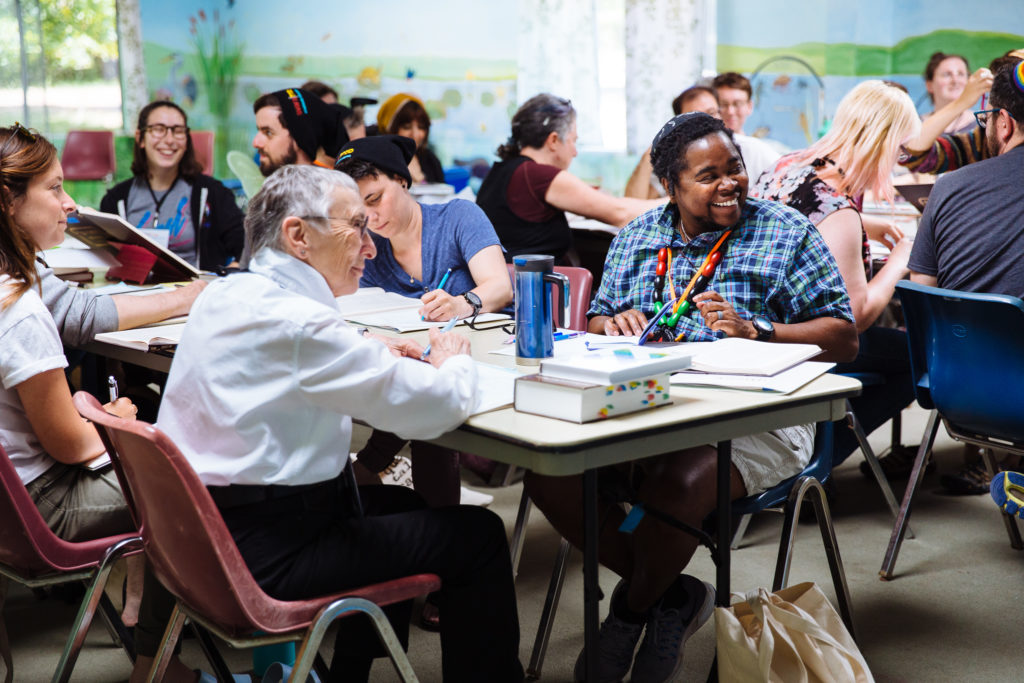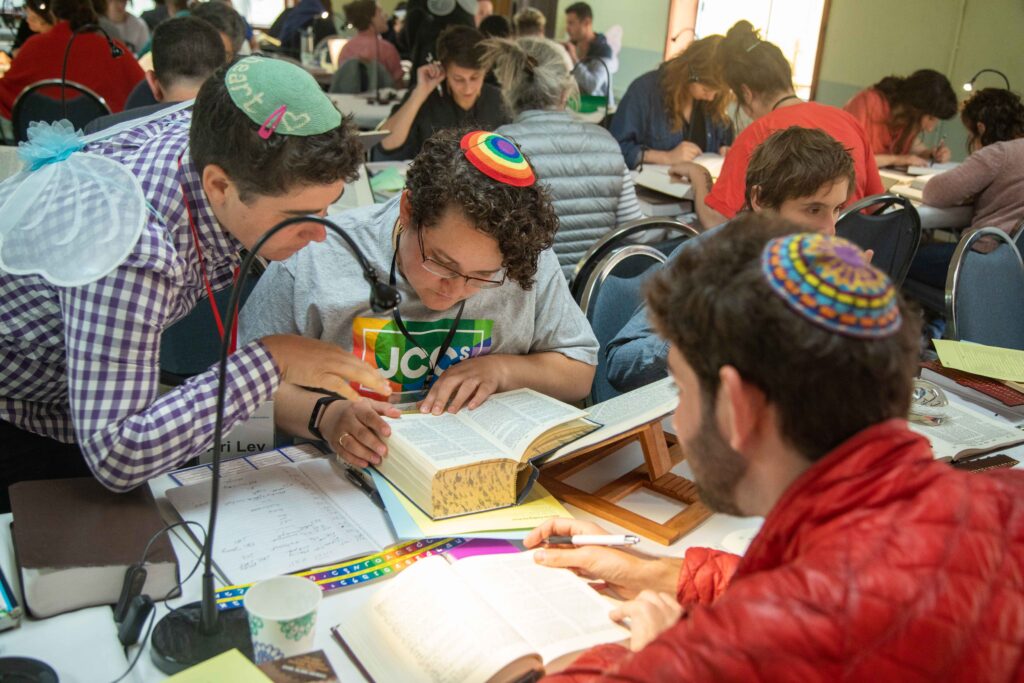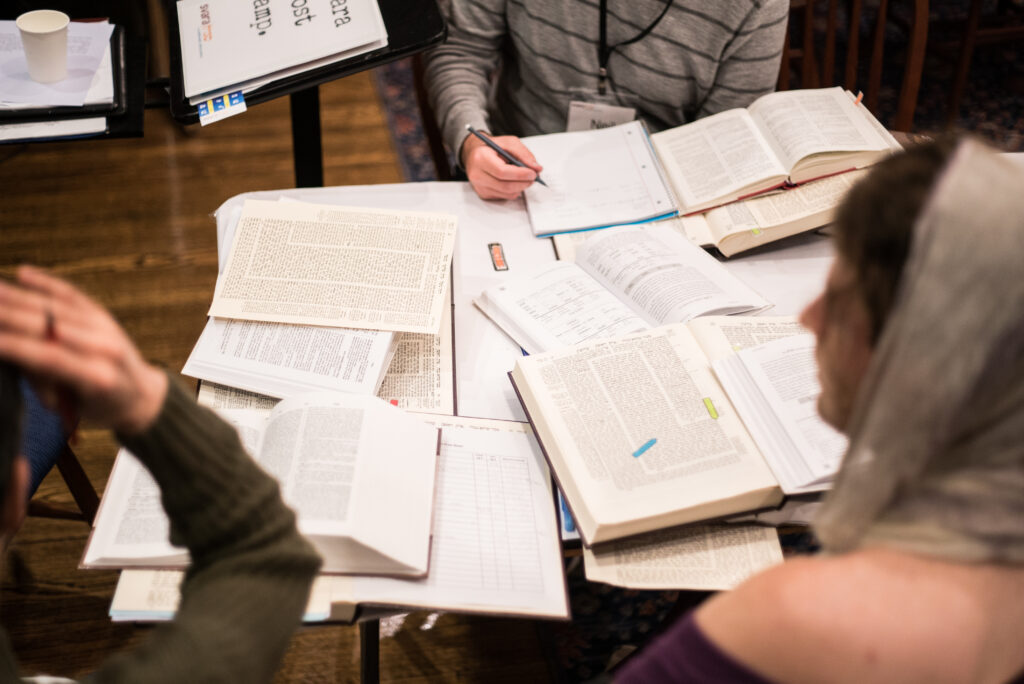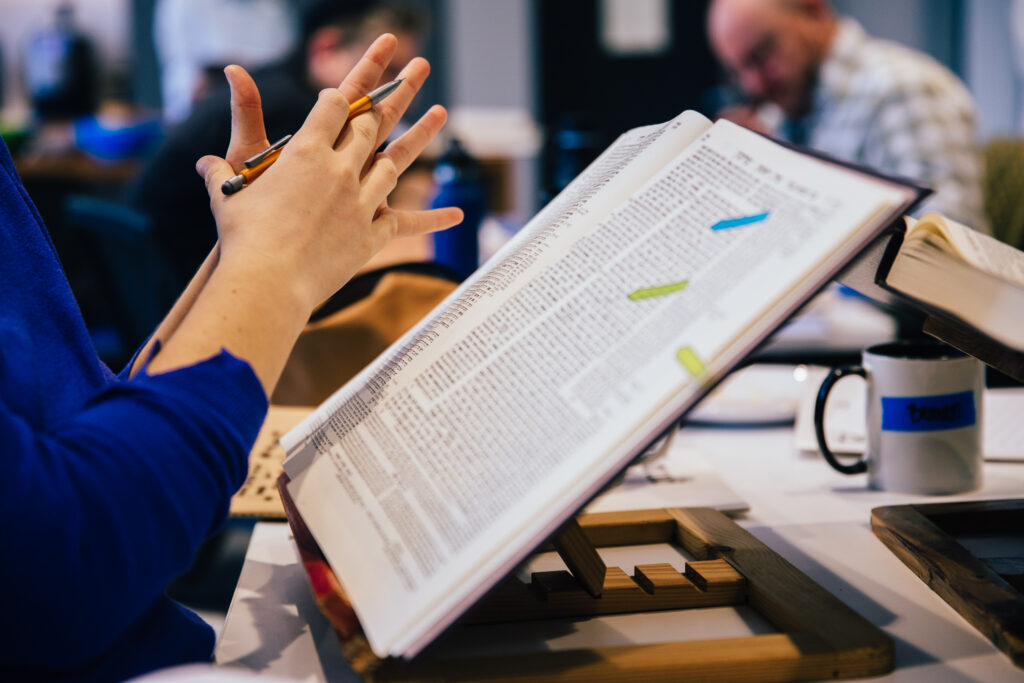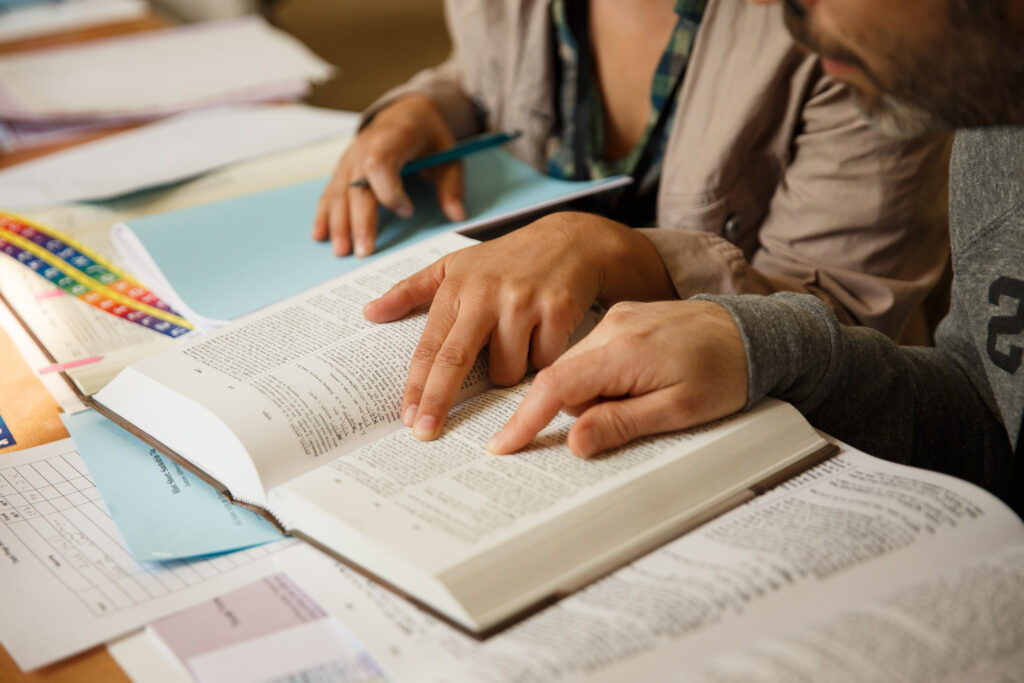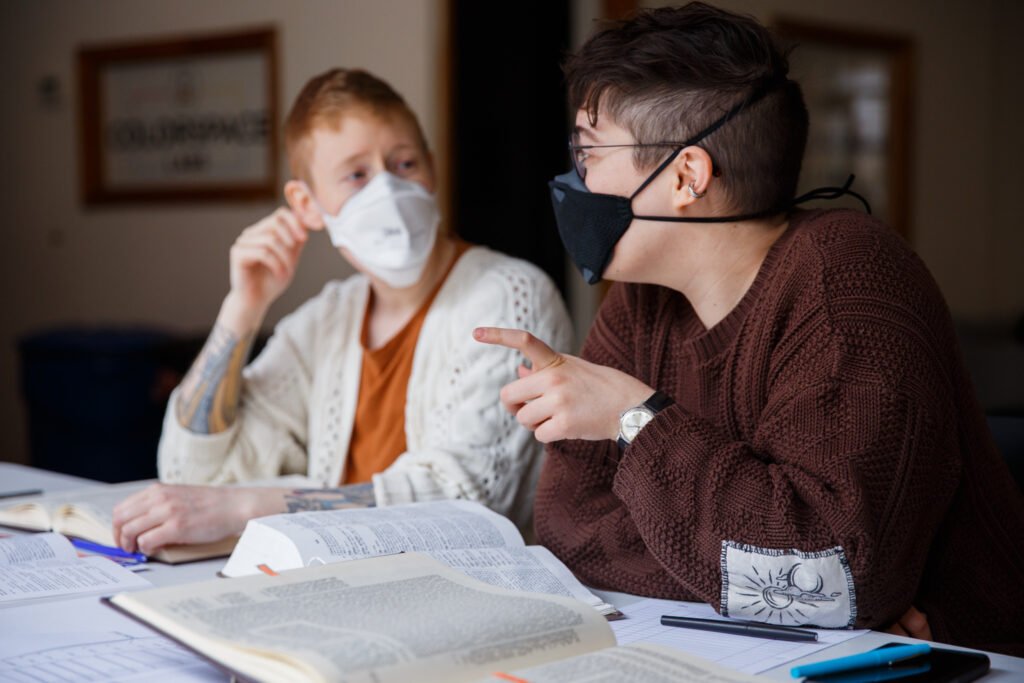I’ve always been drawn to the practice of workshopping ideas. There’s something so energizing about the back and forth of turning something over with another person and poking at it together. I’ve found time and again that when I make space for this practice, my thinking is sharper and the quality of my work is stronger.
Y’all know how important this practice is—it’s chevruta, coming into play outside of Talmud learning! The fabulous Bronwen wrote in her piece, A World of More Chevruta, “Chevruta is where we come to understand more about our intentions, our instincts, our strengths, and our weaknesses. It’s where we learn that we should be whole and seen in our wholeness.” It is exactly this energy that I find myself calling into my work through what I’ve come to call my organizational chevrutot.
While we don’t always follow the same format in my organizational chevrutot the way we do in the bet midrash, there is a general pattern to the flow. Grounding together and sharing how we’re arriving to the space, naming the area of work we’re grappling with or exploring, brainstorming and discussing, and then wrapping up with gratitude. But more than the steps, it’s about the practice of deepening relationships with colleagues, many of whom have become friends. I’ve had organizational chevrutas that span new jobs, life events, ups and downs, and twists and turns, and the practice of coming together around the challenges or excitements of our work has been a grounding throughline to our connections.
As is so often the case with ideas and their applications, I’m not alone in bringing the practice of chevruta to areas of my life beyond the bet midrash. There’s research on how the practice of chevruta can be a tool for law students, for physical therapy students, in nursing, and beyond. What these researchers all come together around is the shared understanding that the technology of being in ongoing learning practice with another person towards a common goal impacts the depth and clarity of both parties’ understanding.
The psychologist Mihaly Csikszentmihalyi’s Theory of Flow explores the benefits of being engaged in mindful practice, of challenging oneself to learn in a deep and focused way. His research demonstrates that when one enters a state of flow, they become happier and more engaged than when they are pulled from one thing to the next.
In many ways, the default mode of operating in our society isn’t conducive to deep practice. We’re pulled in so many directions at all times, with any number of external factors vying for our attention. Between the news, ads, social media feeds, and everything else that comes our way, it can feel relentless and overwhelming in the best of times to move through the world.
adrienne maree brown writes in her poem, Deep Practice, “even the simplest practices become deep when i think of how much history and struggle it took generations to claim the time i have to now sit quietly, listen for a poem, swim in a public pool, read books of self-improvement, say what feels true, love myself as i am, and reject any construct that limits my humanity.”
That, I think, is what becomes possible through our chevruta learning. The depth and space to love ourselves and each other, to be vulnerable, to grapple, and to heal. We do this together every time we enter into learning at SVARA. When we consider that the bet midrash is also a laboratory, a space to hone the way we think and move through the world, the practices we use inside our learning can transfer beautifully into a myriad of other contexts in our lives. Who are the people you call upon in your life that may actually be your chevrutas? What, if anything, changes when you start to think about this practice in your day to day life? And may this frame on chevruta outside the bet midrash open up new practices that bring you grounding and inspiration.

